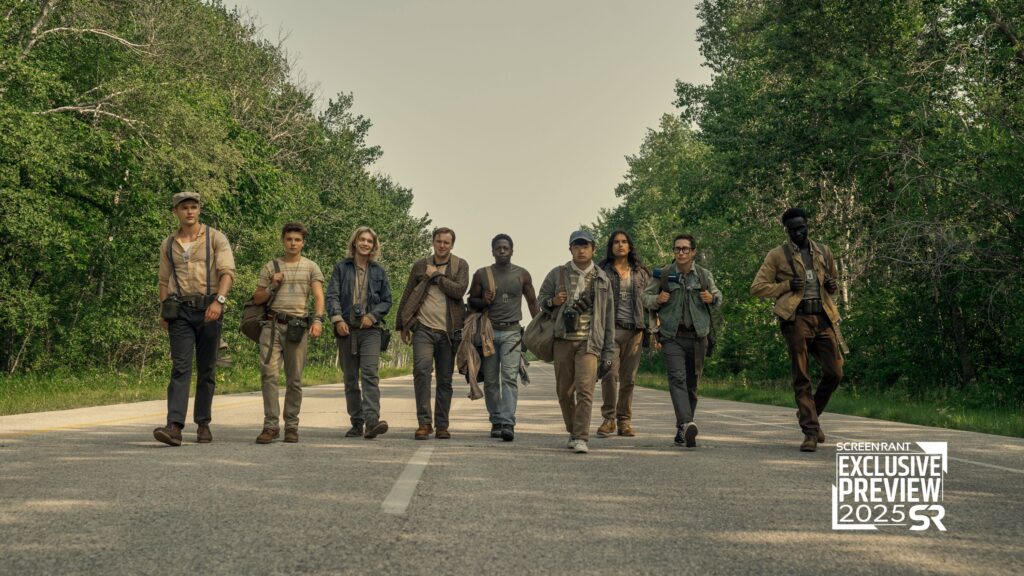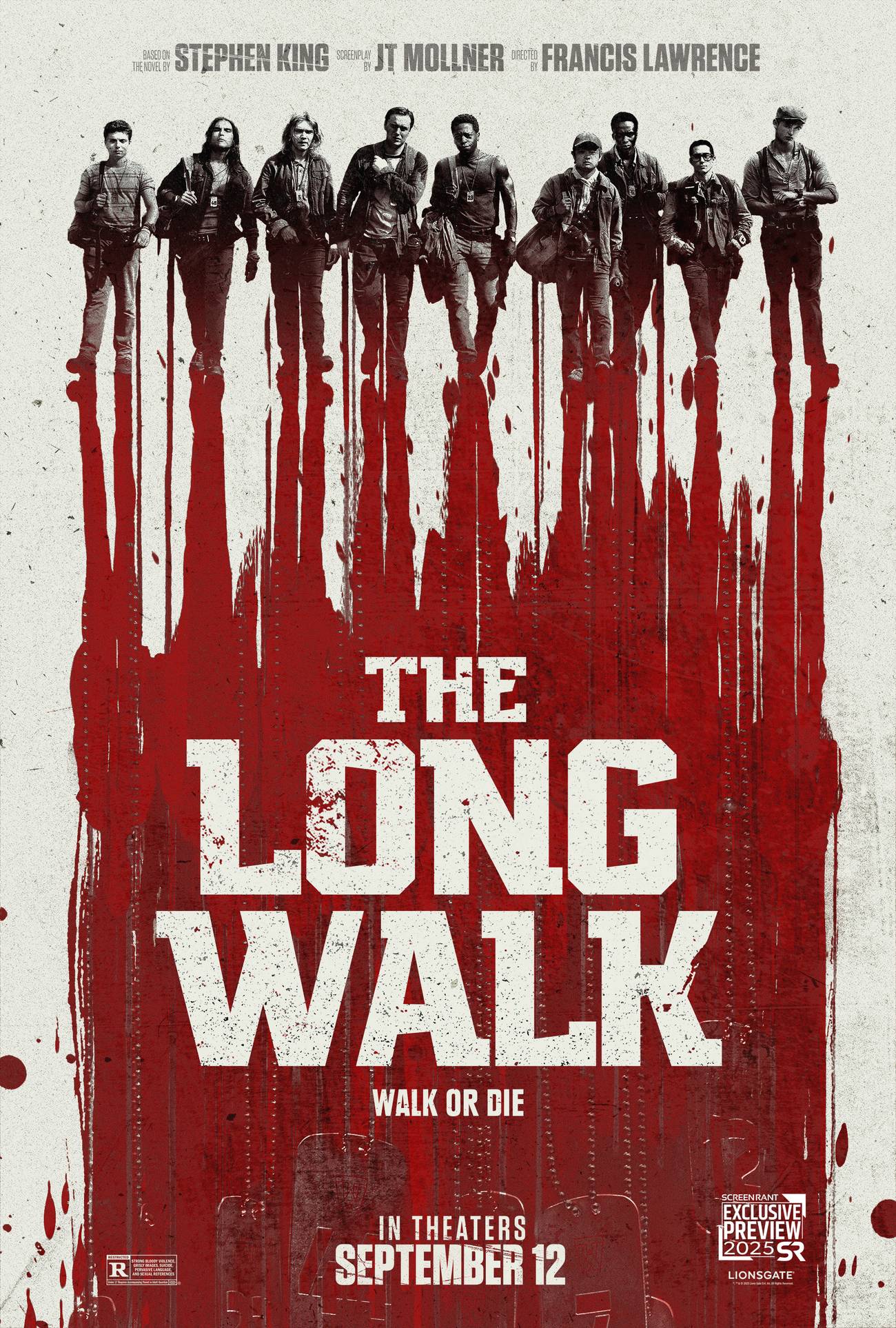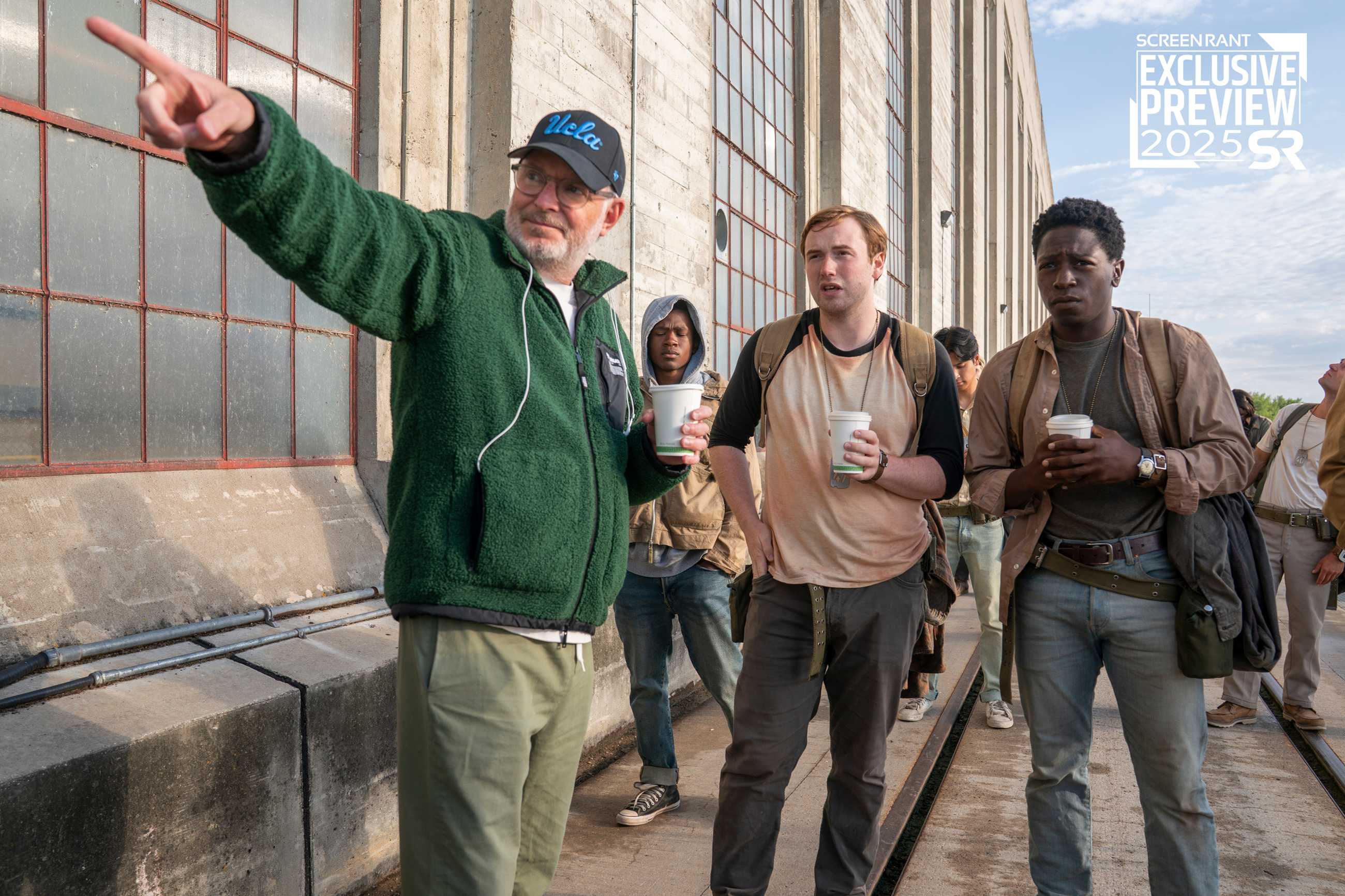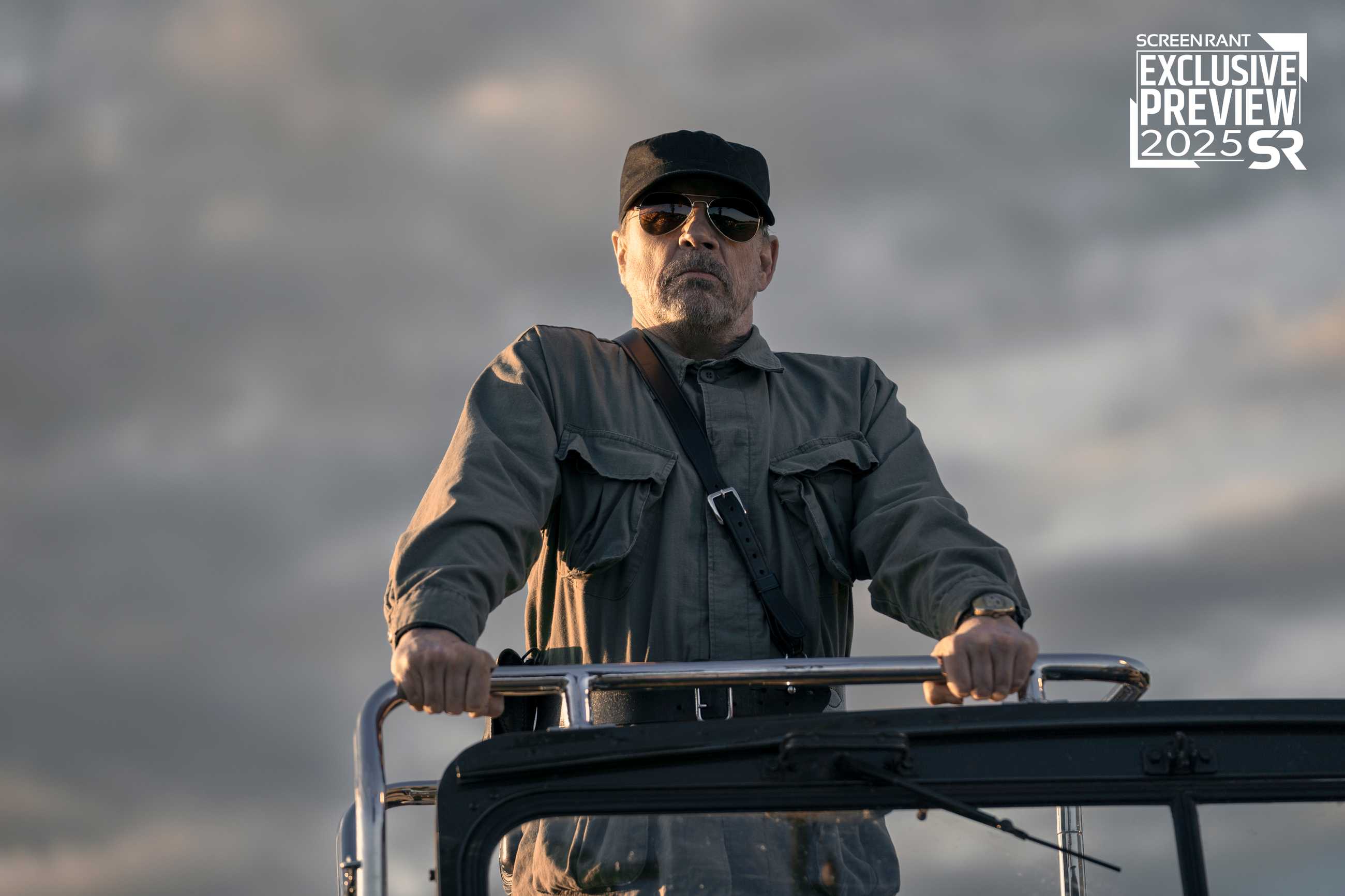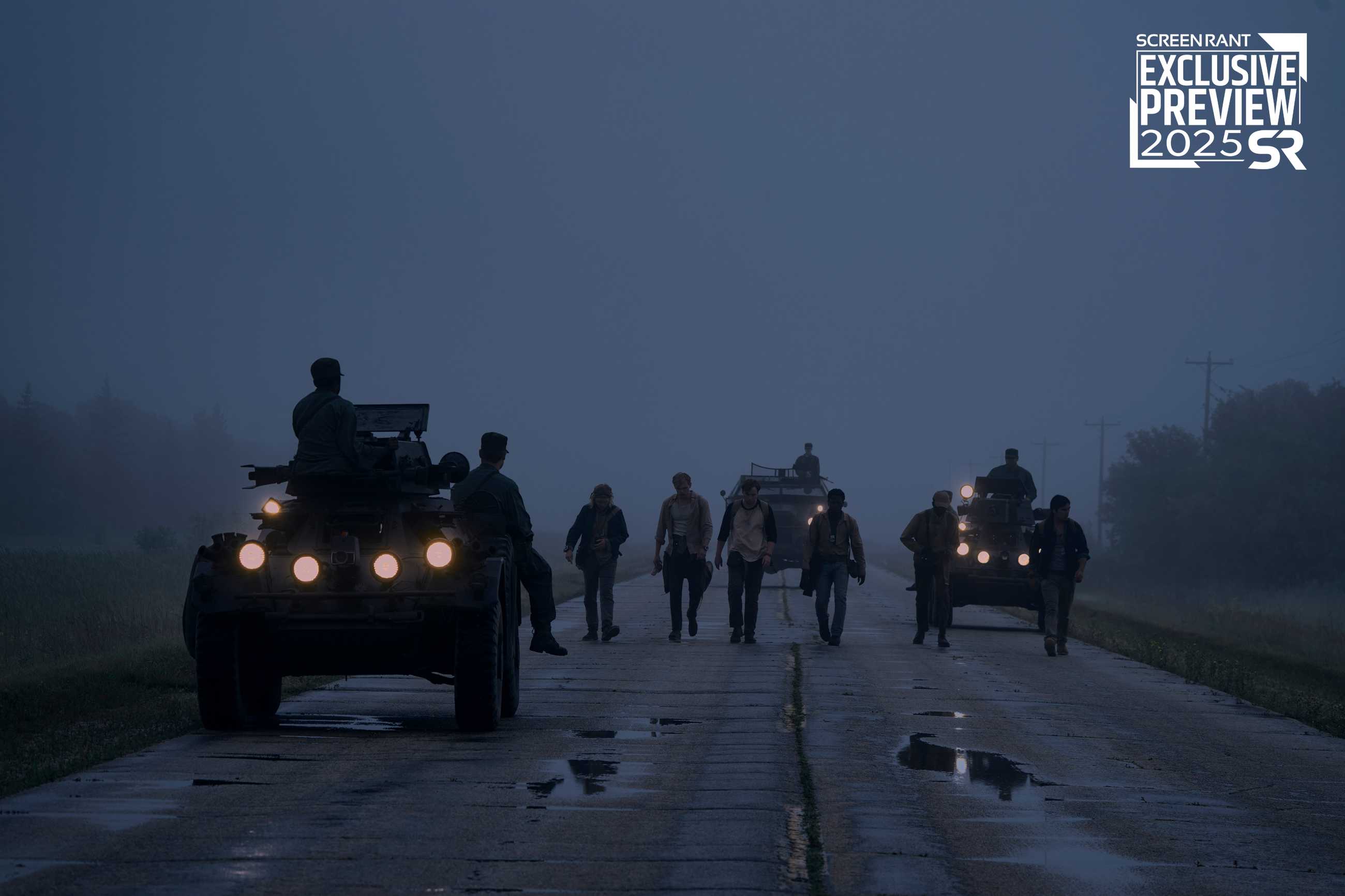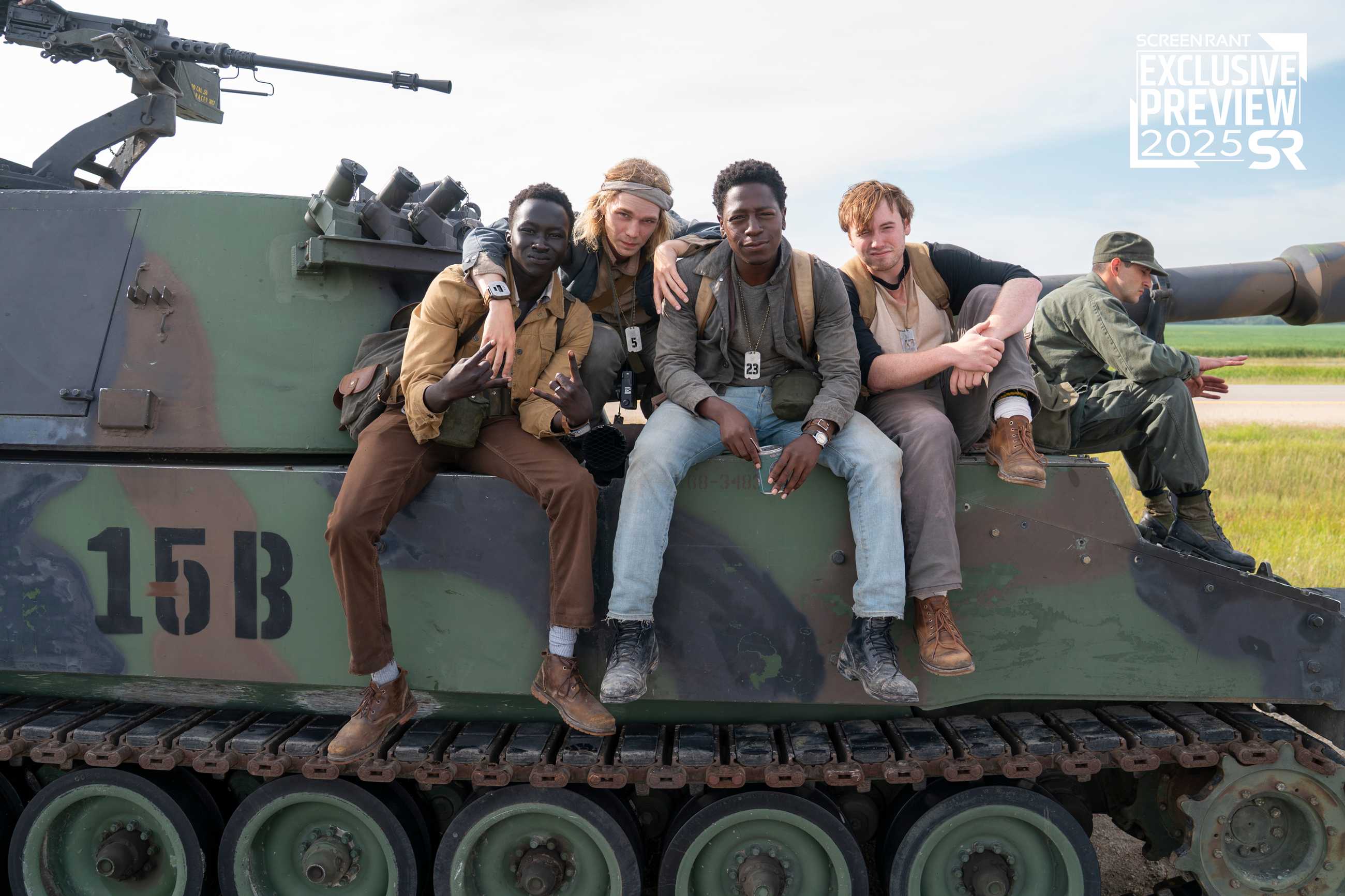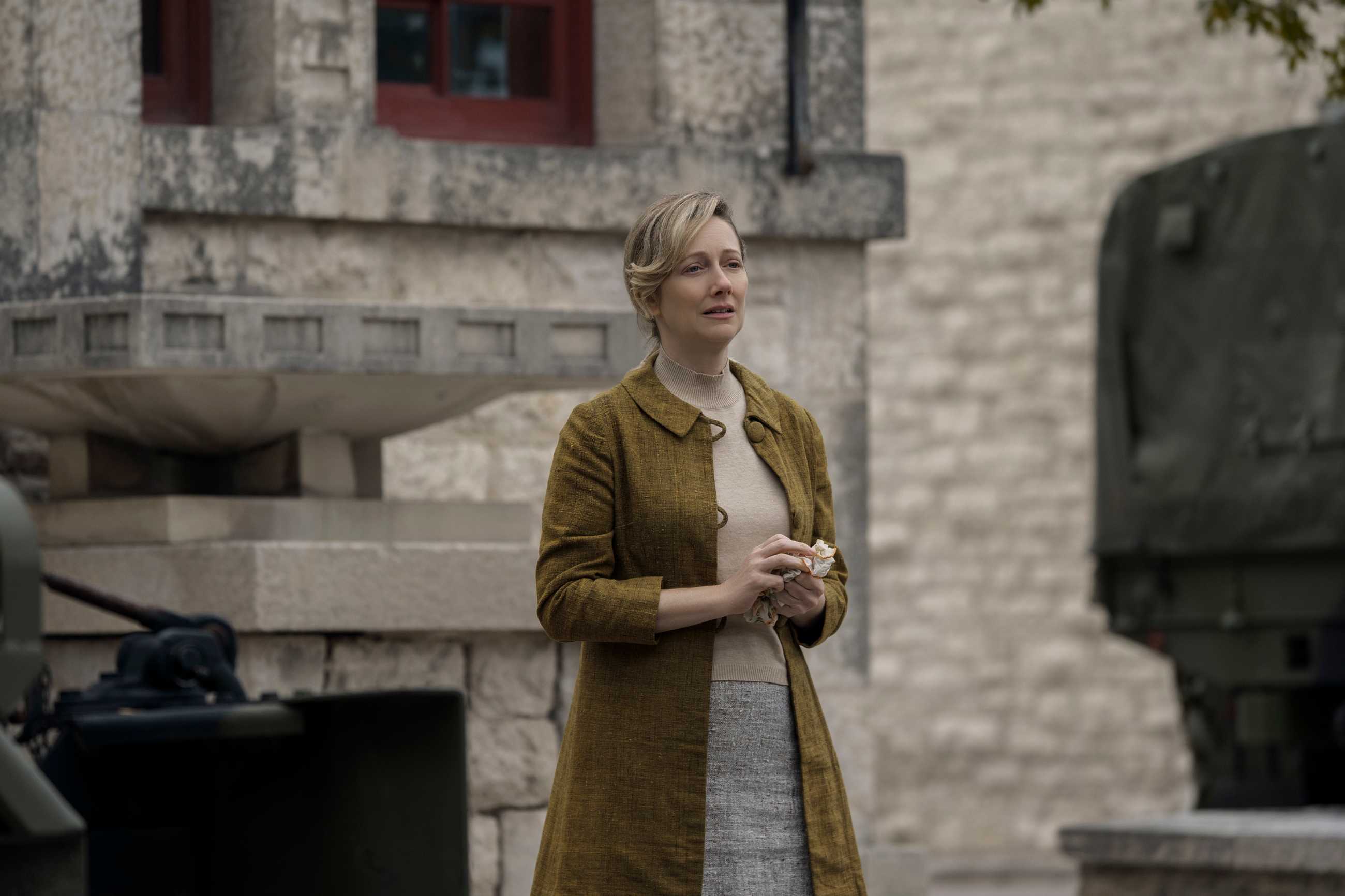Few Stephen King novels have carried the weight of expectation like The Long Walk. Written when King was still a teenager and published under the pen name of Richard Bachman in 1979, the story has left its mark on readers for half a century and tempted some of Hollywood’s biggest names. Yet for decades, the adaptation stalled.
Now, with Francis Lawrence directing an ensemble led by Cooper Hoffman and Mark Hamill, The Long Walk is finally here. It may be the most faithful King adaptation yet, and one whose haunting timeliness makes it impossible to ignore.
For this exclusive Screen Rant cover story preview, we sat down with the filmmakers and stars who brought The Long Walk to life. Director Francis Lawrence, screenwriter JT Mollner, and producer Roy Lee opened up about the decades-long journey to get this story to the screen. Cast members Judy Greer, Mark Hamill, Cooper Hoffman, David Jonsson, Garrett Wareing, and Tut Nyuot shared how they approached their roles and the themes that resonate more than ever today.
In their words, The Long Walk becomes more than an adaptation. It’s a story about resilience, connection, and why a novel written by a teenager more than fifty years ago still matters today.
The Long Road To The Long Walk
The march to adapt The Long Walk has been nearly as grueling as the story itself. For more than 40 years, the rights moved between filmmakers, with George A. Romero once attached and Frank Darabont circling the project for years.
“It was one of those books that I read when I was a teenager, and it always stuck with me,” recalls producer Roy Lee on how it remained so elusive. “It was funny, Stephen’s agent was always asking me if there was any other Stephen King book I wanted to do, and on top of the list was always The Long Walk. And he was like, ‘That’s taken by Frank Darabont,’ every time.”
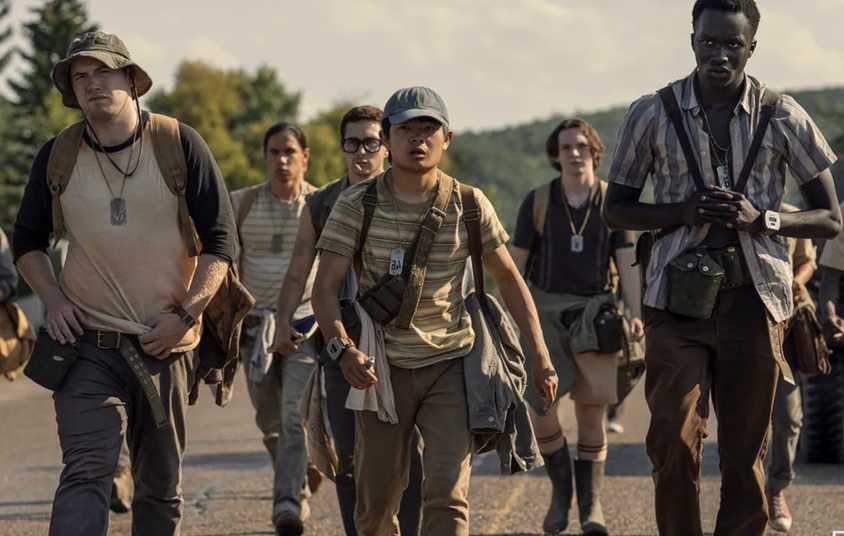
COVER STORY PREVIEW
Stephen King Gives Simple Explanation For His First-Ever Book Taking 46 Years To Become A Movie
Stephen King’s novels have been adapted for years, but the first book he ever wrote, The Long Walk, is only getting big-screen treatment this year.
Screenwriter JT Mollner also named Romero and Darabont in noting how many Hollywood legends had tried and failed to bring The Long Walk to screen. “A lot of my heroes were involved in attempting to make this in the past,” he adds. “I think it has a lot to do with the timing. And Francis just had the right approach, for sure.”
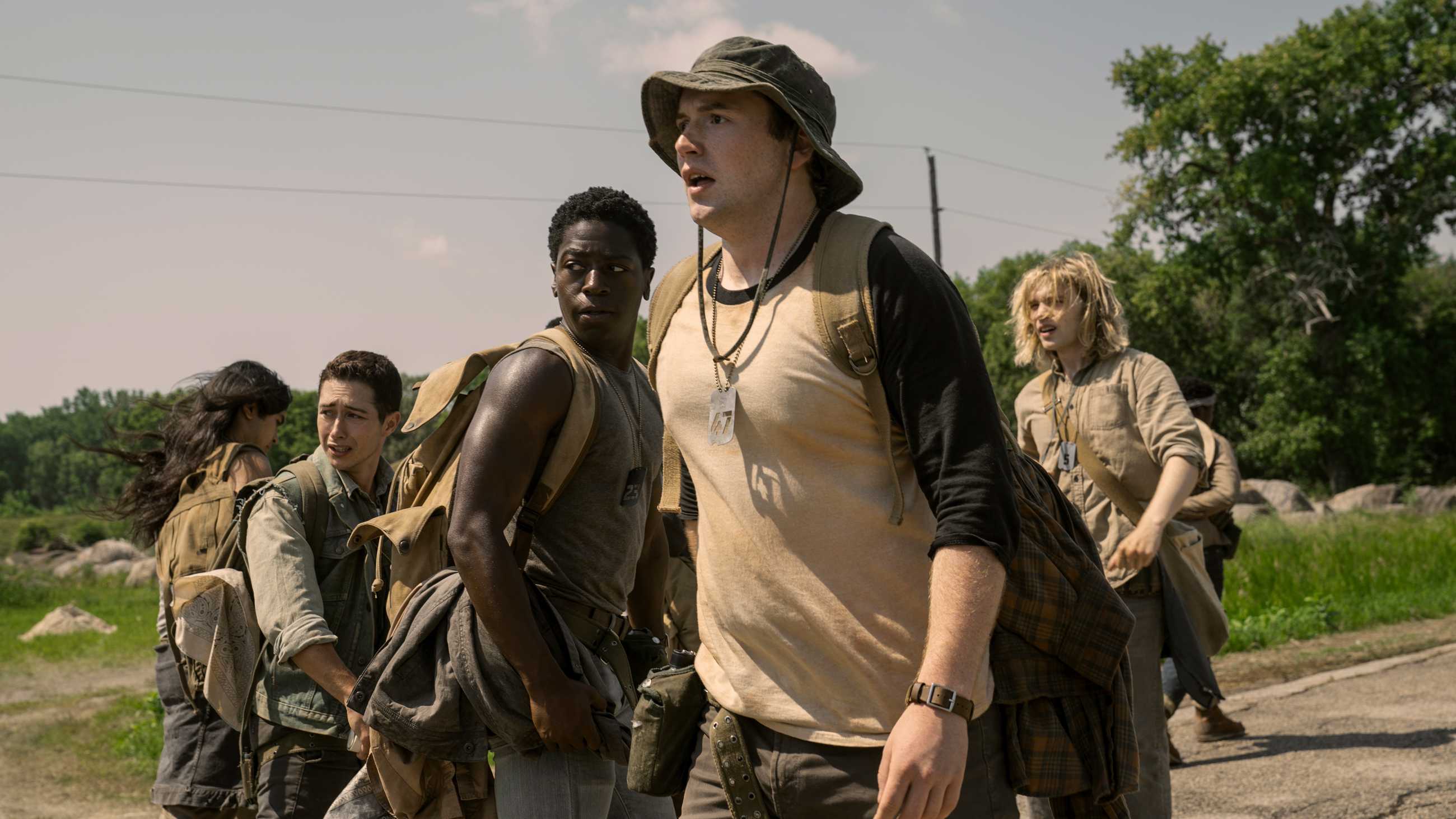
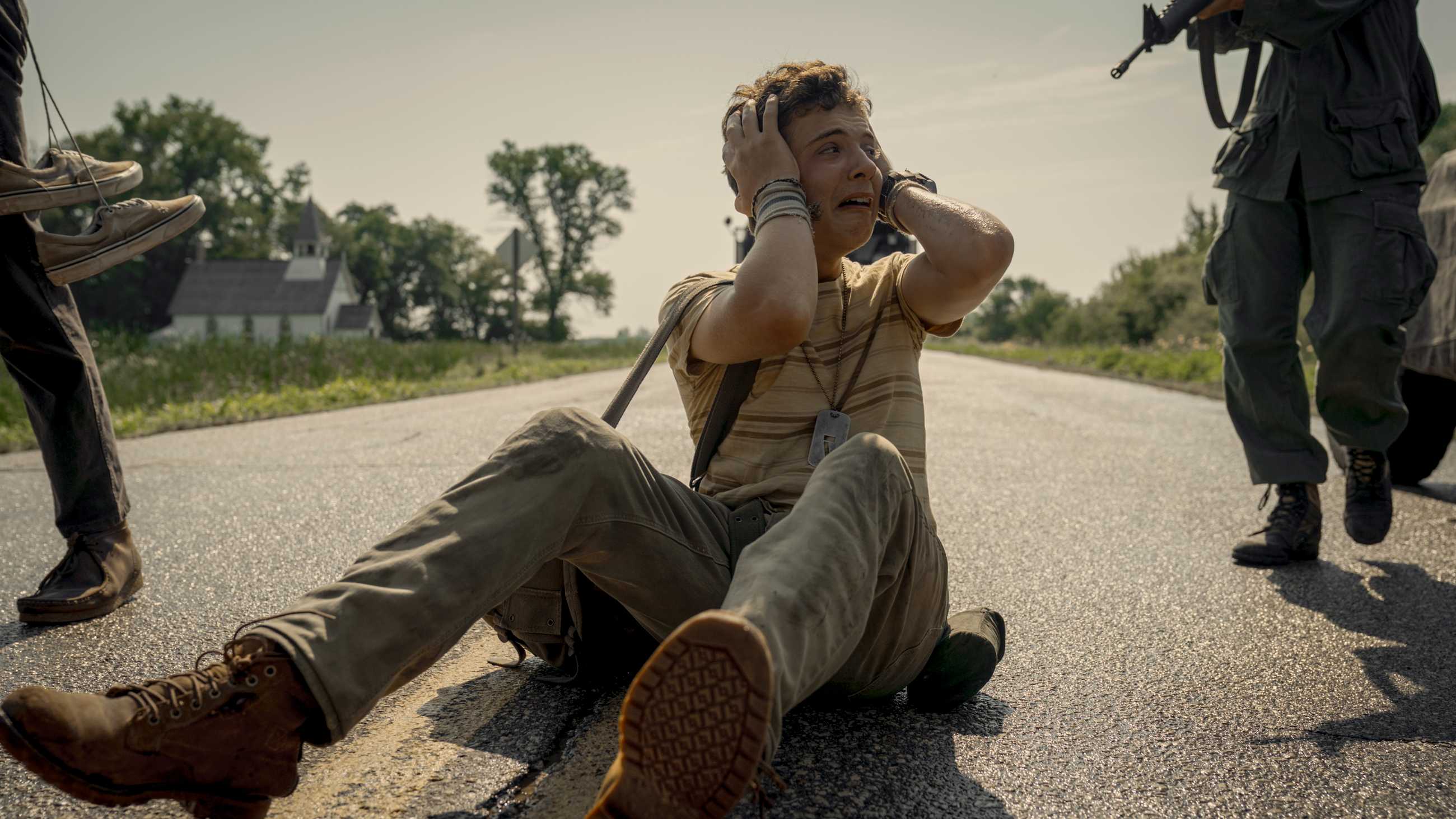
When the project finally landed with Francis Lawrence and Roy Lee less than two years ago, it came together with surprising speed. Lee said, “Over the past 20 years, there were always different people, so this one was just brought to my attention less than two years ago. From the time of actually getting to adapt the book to finishing production was under two years. It was unbelievable how quickly this came together,” explains Lee.
But this is one of those books that just stuck with me for decades, and I always wanted to do it.
For Mollner, the reason it was worth waiting all these years lies in the power of King’s earliest novel:
“It’s a miraculous novel, in my opinion, because it actually was the first novel Stephen King wrote. Even though Carrie was the first novel he released and published, he wrote The Long Walk years before Carrie came out. It’s astonishing to me how well it’s written. And it was written by, I believe, a 17-year-old. He was either 17 or 19, but I know he was a teenager.”
“That’s the first thing I remember about it; just being so blown away by how well it was written and how haunting these characters are,” Mollner continues. “By the time you’re finished, you feel like you’ve become friends with these people.”
One of the reasons it finally came together was King himself. Unlike his earliest screen experiences, the author now maintains approval across key decisions. Mark Hamill tells us he remembers that vividly: “After some early unpleasant experiences, he has casting approval, director approval, right on down the line. He’s the main guy that okays everything.”
That oversight extended to the tiniest details. Roy Lee recalled King’s only script note: “Stephen only had one note from when we gave him the script. He’s like, ‘Can you change it from 4 miles per hour to 3?’ Because that’s what it was written in the book. He goes, ‘There’s no way that you could walk 4 miles an hour for that long.’ That was the only initial note when he gave back.”
Francis Lawrence’s Vision: Building A Dystopia That Hits Close To Home
When Francis Lawrence finally got the call from Roy Lee that the rights were available, he did not hesitate. “I think I read it close to 20 years ago. I was working on I Am Legend, and Akiva Goldsman, who was my producer on that movie, loved the book and gave it to me,” Lawrence recalls. “I read it and absolutely fell in love with it, and we wanted to make it. Unfortunately, somebody else got the rights to it, so we couldn’t. But it had always stuck in the back of my head.”
I think it’s probably my favorite Stephen King novel.
“I checked in on it over the years and was always surprised,” Lawrence continues. “Nobody ever made it, different people had the rights to it, and 18 years later or something like that, I got a call from Roy Lee. He had gotten the rights and wanted to know if I wanted to make it, and I was like, “Yeah, I would love to.'”
From there, timing was in the team’s favor. JT was hired to write the script, which he worked on quickly, and Lawrence didn’t have a movie to make that year at a time when Lionsgate wanted to make The Long Walk. The other key element is that the timing matched the approach. Lawrence: “I really liked about our approach to the story is this idea of financial nihilism, which was also part of the sell to the studio and something that we leaned into.”
“What is the reason you would do something like this and join a walk like this? Originally, when written, it was about young men going off to war – and that will always be a part of it. There’s always going to be a war element to this story, and you can feel it when you watch the movie. But for me, it’s about, ‘Would you do something like this to put food on the table? Would you do something like this to put a roof over your head?’ With the loss of the American Dream, and with it being so expensive to live not just in America but around the world, I think that those themes are very relatable. That makes it a very relevant story to tell.”
Lawrence described to us how shooting The Long Walk, a story he believes that could quite easily work as a play, in sequence revealed the story’s physical and emotional toll. It’s also why he wanted to work specifically with JT on the script since he’s a director too. “I liked having a filmmaker who was also a screenwriter, so that we would both be thinking about it cinematically,” explains Lawrence of the planning process. “We did a lot of talking about how to try and make it as cinematic as possible.”
“Some of that has to do with locations, some of that has to do with the things that we see along the way, some of that has to do with the time of day, and some of that has to do with the weather. But a huge part of it – and this was something that he and I really worked on, and that our shooting style really helped with – was that I really thought that it was important that we were able to visually track the sort of deterioration of the characters. We see how fresh they are in the beginning and how deteriorated and degenerated they are at the end of the movie – psychologically, emotionally, physically – from a lack of sleep. And we shot chronologically, which really helped.”
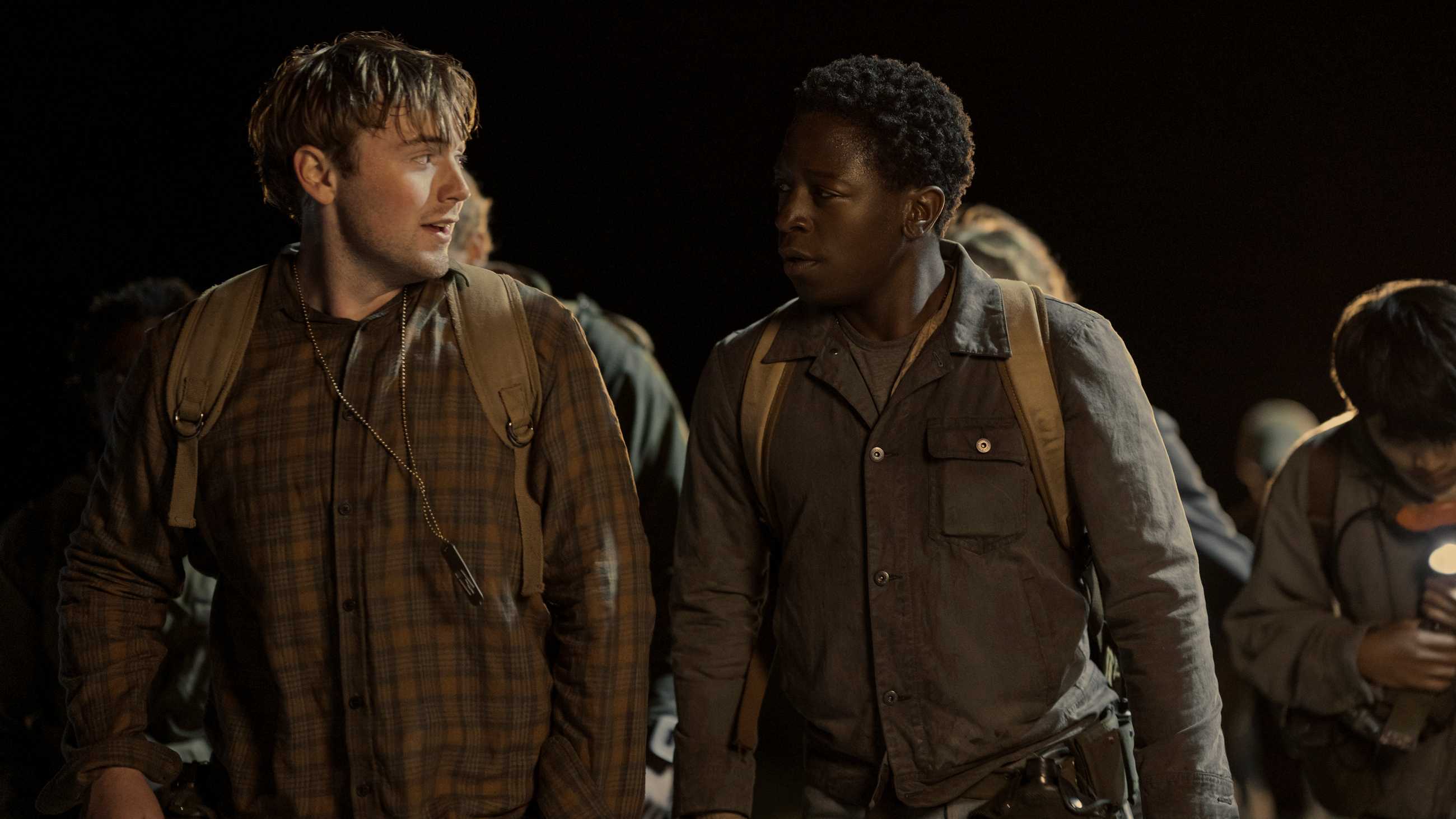
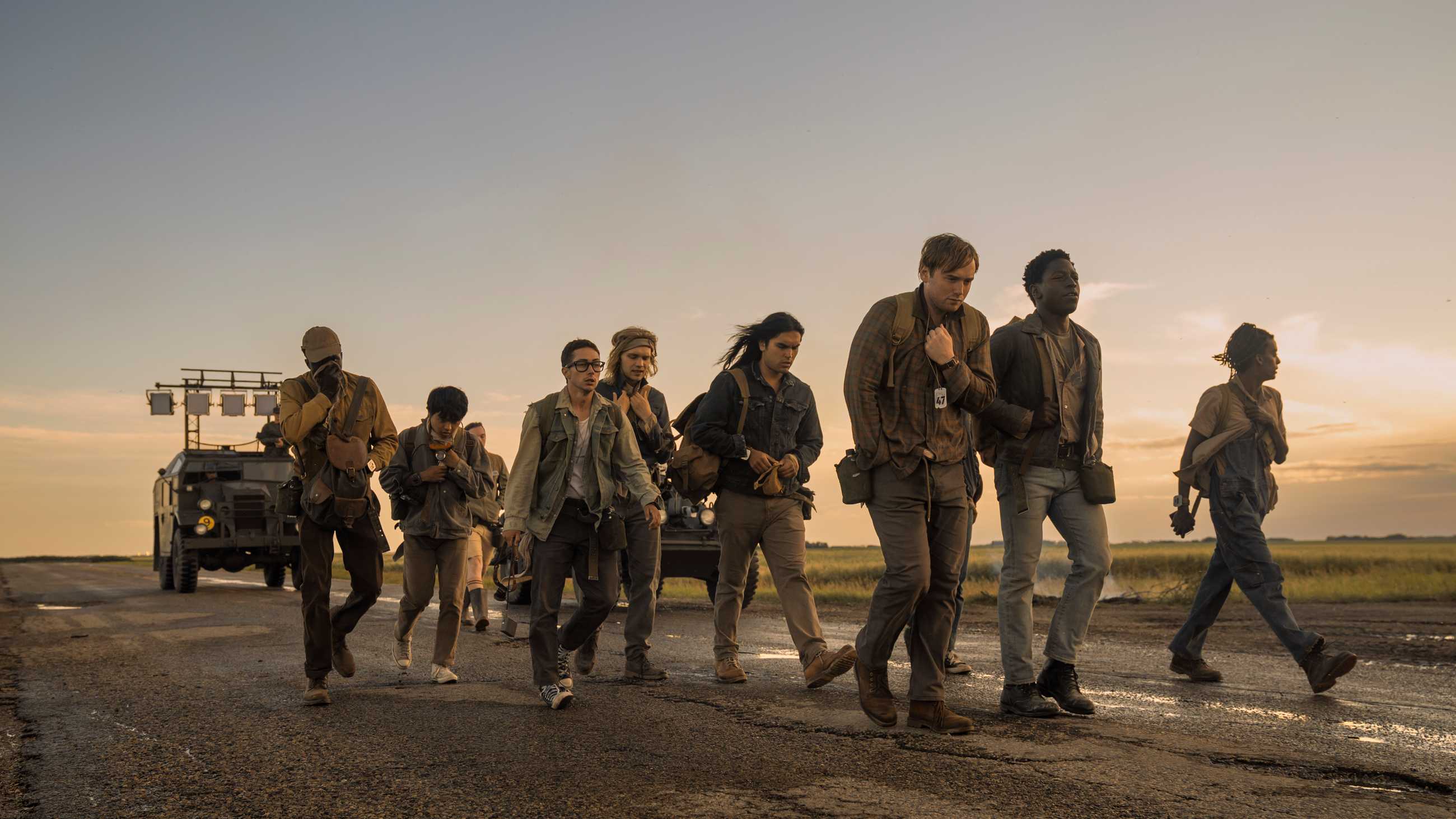
The Long Walk embraces a stripped-down and more intimate filmmaking style I noted in making the obvious comparison to Lawrence’s work on another dystopian setting in The Hunger Games franchise. “Honestly, it really excited me. I’ve always really liked making decisions because decisions start to create parameters, and I think that I feel more comfortable and more relaxed once there are more parameters and fewer choices to be had. I think it’s very problematic when you can do anything at any time.” Lawrence explained.
The film’s budget shaped everything from cast size to crowds in the background, Lawrence tells us. “We made it for a small amount of money, and that instantly creates parameters that I think are really interesting. There’s a hundred in the book, but we have 50. We can’t have every town they walk through be filled with people because that’s thousands of extras that we can’t afford.”
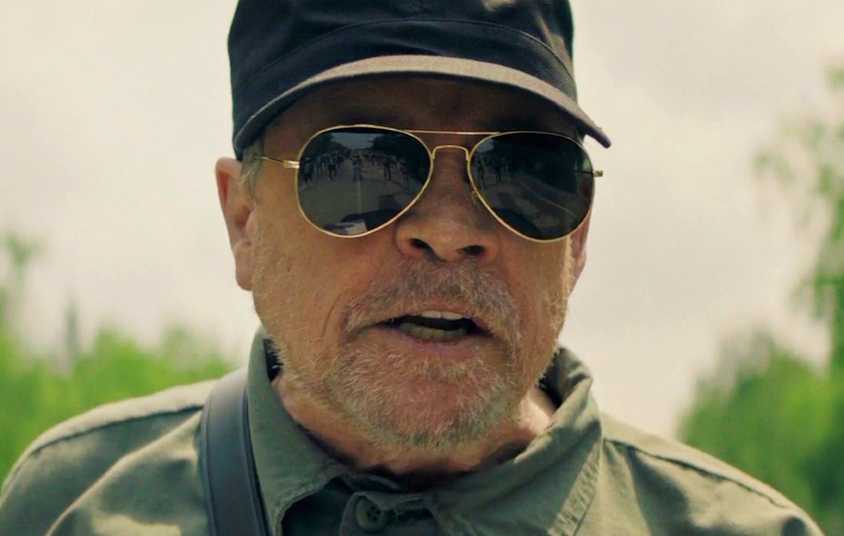
COVER STORY PREVIEW
First Reactions Are In The Long Walk & Everyone Is Speechless
The first social media reactions are in for the new dystopian Stephen King movie, and it has dazzled the majority of those who got to see it.
Those limitations forced new solutions. “Once that gun goes off and they start walking, we’re on the move with them… Everything is on the move, and you do a three-quarter of a mile walk for every take, and then everybody goes back to one, and you do it again and again and again. It was a very unique approach to making a movie.”
The young cast quickly felt that intensity from their director. In our conversations with the stars of The Long Walk, David Jonsson remembered: “This is really about characters. This is about studying who we are as human beings and the capacity that we have. And I think he really pulled that out. It felt like a passion project to him.”
Casting The Boys (And The Major Who Holds Their Fate)
Bringing Stephen King’s walkers to life was no small feat. The story rests entirely on its young cast, led by Cooper Hoffman as Ray Garraty, also known as number 47 in the group of walkers.
“He’s just a fantastic actor, and he embodied the role of Ray,” Roy Lee tells us of Hoffman’s performance. “The actors in the movie said that all of their actor friends were trying to get parts in this movie, but his read of it was incredible. And then we did chemistry reads, and he was amazing.”
“Cooper Hoffman was my first choice. I had seen him in Licorice Pizza,” Francis Lawrence added. “I knew that he would be a great Garraty.”
For Hoffman, Garraty’s journey mirrored real life. “When I read the script, I was inherently driven by this 17- or 18-year-old having an idea of what they think this thing should be, and then halfway through meeting someone and shifting their ideology about what it is. And that is immediately something I know very true in my heart,” he said.
Halfway through, you meet someone and it changes everything.
The casting of McVries (#23) was equally crucial. Lawrence recalled: “David Jonsson actually wasn’t even really on my radar… I instantly knew that this guy was McVries. Seeing him do his first scene, I was like, ‘This guy’s going to be McVries, and I think this movie’s really going to work.’”
Then there was The Major. For many, the idea of casting Mark Hamill in the role seemed unlikely. Roy Lee admitted: “At first, everyone was like, ‘Mark Hamill? You mean Luke Skywalker? How could that be?’ But [Francis] just saw Mark Hamill as that character, and Mark brought this gravelly, dark, twisted energy to the character that you would not have expected.”
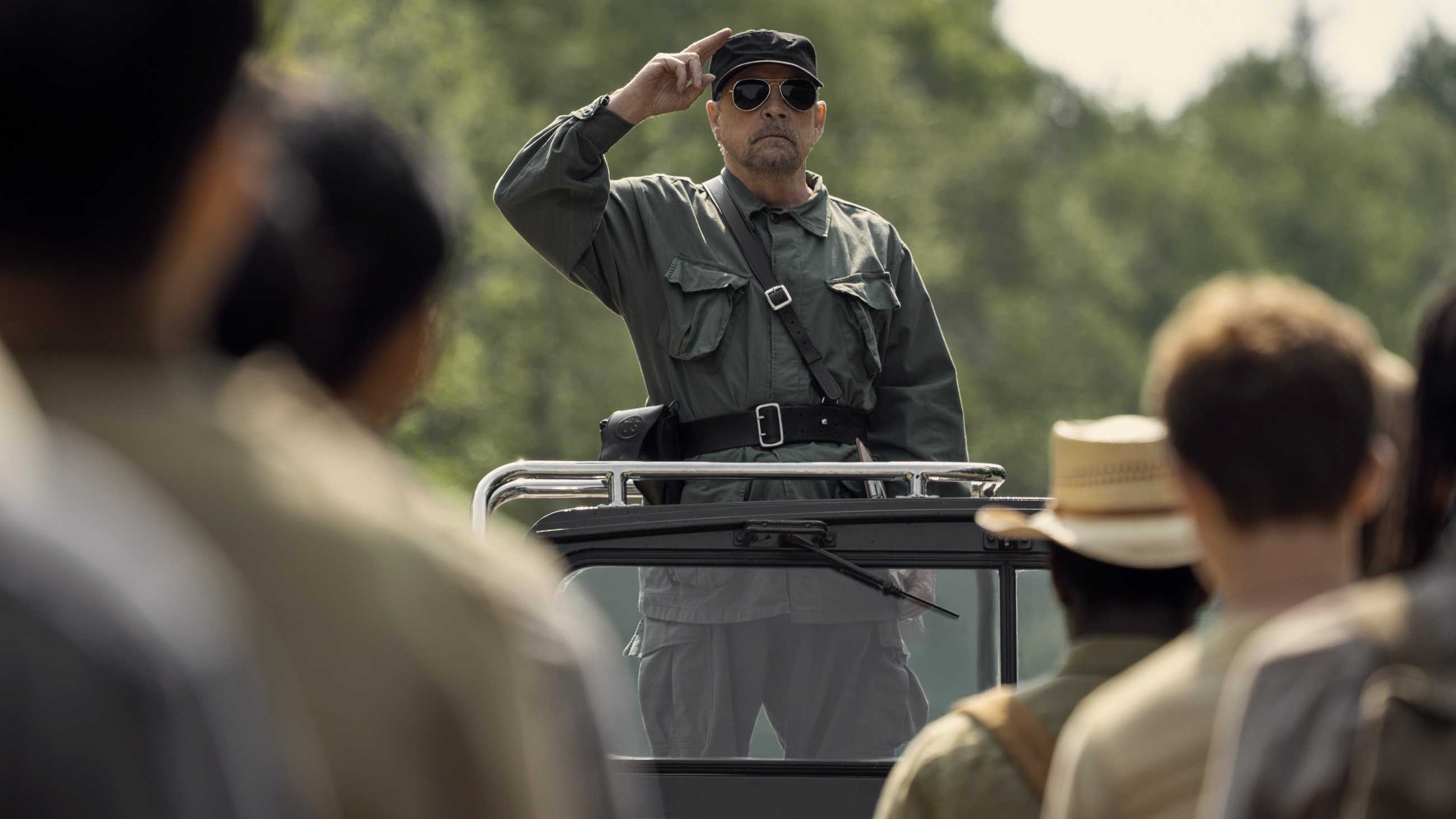
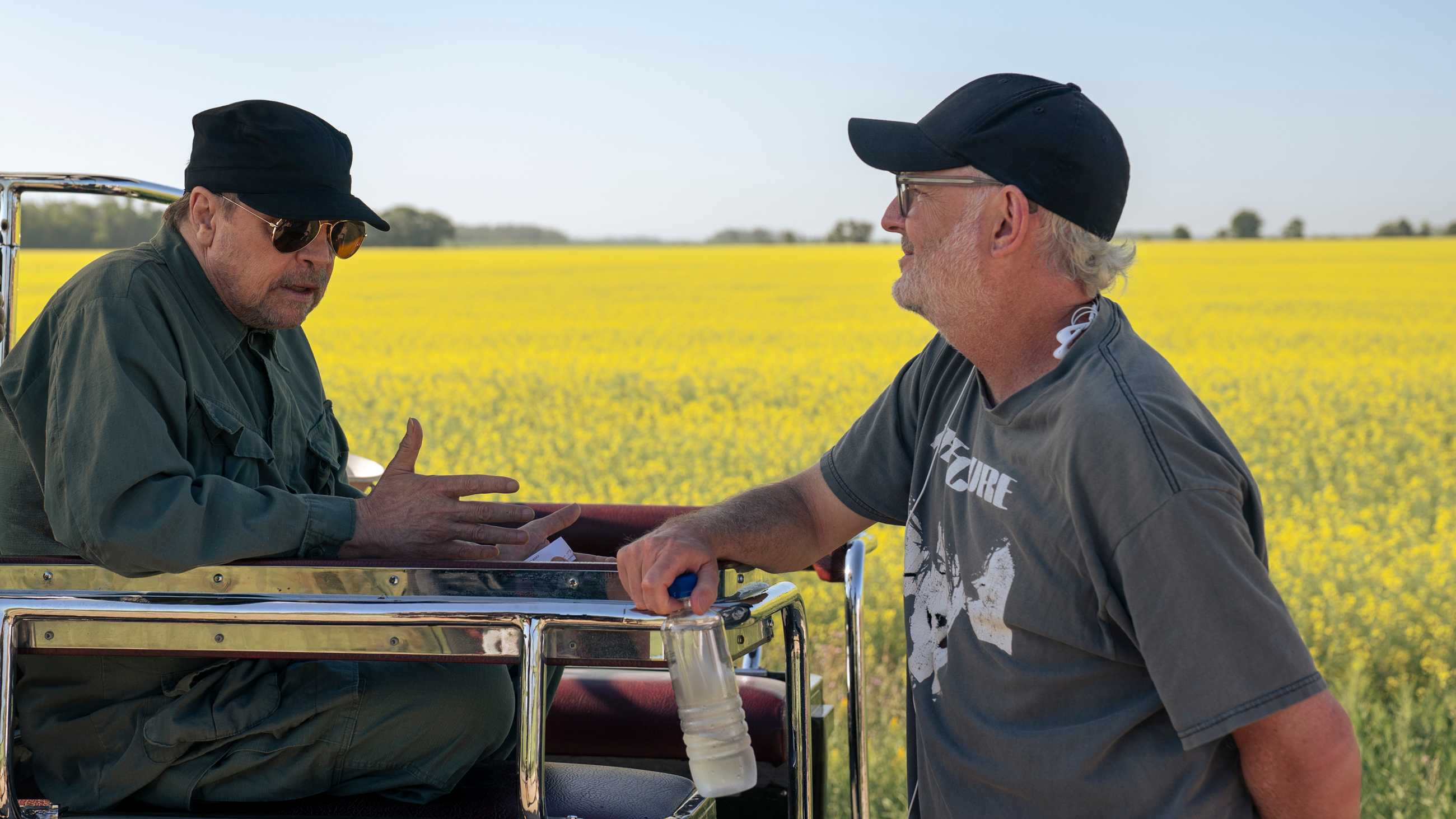
Hamill relished the chance to embody that menace. “Basically, what you have to do is look at the script and say, ‘What do I need to bring to make this script as impactful as it can be?’ I had it a lot easier than these guys because I’m a fairly strident, one-note, pain in the ass that everyone hates. I’m standing in the way of them being happy and successful.”
I was hoping that this would be the Stand By Me for the next generation.
Roy Lee admitted he didn’t know many of the young actors before casting began, but he hoped their breakout would mirror another iconic coming-of-age story. “I was hoping that this would be the Stand By Me for the next generation. When I saw Stand By Me when I was younger, I had no idea who the actors were, but they all ended up becoming bigger stars too.”
Garrett Wareing, who plays Stebbins (#38), said joining the cast felt like stepping into a legacy. “You’re bringing that to life, honoring them, and letting the fans be excited about the casting and be hopeful about what they’ve envisioned these characters they love to be.”
The cast also included Judy Greer as Mrs. Garraty, Ray’s mother, whose role is small but pivotal. For her, the heart of the film came through one intimate moment. “After I wrapped filming, what stayed with me was the flashback scene I shot… there’s this beautiful, intimate peek into the world of this family. In a few minutes, you learn everything you need to know about this family, and it was very hard to shoot.”
Adapting Stephen King For A New Generation
Adapting Stephen King has always been a challenge for filmmakers. His stories are beloved, his fans are vocal, and the shadow of past adaptations looms large. For The Long Walk, the team knew their first responsibility was to the book itself.
“The intent always was to be as faithful as possible because all of us loved the book,” said Roy Lee. “But it was JT who made some choices that he pitched to us… At every point, he tried to be as faithful as he could, and the only times he deviated were when he thought he could update it and make it more relevant for our times.”
Mollner recalled how closely Stephen King remained tied to the process. “Every time there was a draft, he would read the draft, and we would get a little feedback. Sometimes just a thumbs up, so we knew every time we were going forward with anything that he had approved it and liked it. He was definitely giving feedback on things he’d like to be changed.”
Francis Lawrence made sure that even when changes occurred from the page to screen, the spirit endured. I asked if there were any elements from the book that absolutely must be preserved. “Primarily, most of the characters,” answered Lawrence. “We couldn’t save everybody, so I think Stebbins in our movie is a composite of two characters, but the bulk of the main characters I knew I wanted to keep,” he continues:
This is more of a generality, but I wanted to keep the spirit of the book, the thematic elements, and the enigmatic way the story ends that makes you think about it existentially. “What does this movie mean? What does The Long Walk mean? What happens to our character at the end of the movie?” I wanted to stay really true to that. Other than that, it was a lot of dialogue moments, and the connections between the boys. The camaraderie was super important to me.
Mollner explained that faithfulness was not just about plot, but about the characters who make the story unforgettable. “When you finish a Stephen King novel, the characters are so well-drawn that you feel like you’re losing friends when you shut the book,” he said. “I never forgot Garraty and McVries, those two central characters, and the group of boys in this book.”
That sense of intimacy, he added, was what made the adaptation feel urgent: the audience had to care about the Walkers the same way King’s readers always had.
For Mark Hamill, that quality speaks to the universality of King’s work. “They’re so relatable. People read them and go, ‘What would I do if this happened to me?'” It is that blend of high-concept horror and deeply human characters that has kept King’s stories resonant across generations, and it’s something the filmmakers emphasized in all our discussions that they worked hard to preserve on screen.
Themes Beyond Survival: Love, Loyalty, And The Heart Of The Long Walk
At first glance, The Long Walk might look like a bleak dystopian story about survival at any cost. But what gives it real staying power is the way it highlights loyalty, friendship, and the simple act of standing by someone when things get tough.
Producer Roy Lee hoped audiences would see that side of it. “I just hope they take the messages of friendship and loyalty and camaraderie, and that they learn to enjoy each moment.” His belief was that the story’s power comes not from the march itself, but from the bonds that form along the way.

COVER STORY PREVIEW
Director Francis Lawrence Explains Why The Long Walk Must Be R-Rated
Francis Lawrence explains why his Stephen King adaptation, The Long Walk, needs to be rated R, breaking down the key difference from The Hunger Games.
Tut Nyuot, who plays Baker (#6), said that discovery was what surprised him most about the script. “When I first read it, I thought it was just about walking. But the deeper I went into it, the more I realized it was about people, about what they hold onto, and what keeps them going.”
Judy Greer connected to those same themes, reflecting on a line from McVries that stayed with her long after filming. “I was obsessing over McVries all night long when I couldn’t sleep because I was thinking about when he says, ‘Choose love.’ That was hitting me really hard yesterday. Those conversations between Garraty and McVries are so beautiful, and he’s just an angel. He’s like a prophet, and I connected with finding the lemonade in the lemons. Look for love. Look for brothers and sisters out there. Look for people, take care of people, take care of each other. Be in it together.”
For David Jonsson, who plays McVries, those bonds were inseparable from the scars his character carried.
“I’m not trying to sound cute, but I really do think we’ve all got our struggles in life. And I think Pete carries those scars literally. In that particular moment, I think he’s just not doing it for himself; he’s doing it for Garraty. And I think sometimes it’s a really wonderful metaphor for life. Sometimes our trauma can be used for something better than ourselves; something greater than ourselves.”
Sometimes our trauma can be used for something better than ourselves.
Wareing also connected to the story’s larger meaning. “It’s a moving story. What they talk about, and what we felt, is this sense of camaraderie and the sense of brotherhood that we got, and feeling that we all are one,” he says. “Appreciating something for what it is while you have it is a very beautiful thing, and becoming okay with the temporal nature of things in life.”
“That can also be said for our experience on set because it was such a meaningful and moving and emotional time for us. This film exists in these ways, where you can follow these boys and get to know them as they exist to one another. I think it’s a beautiful microcosm of life, in a way, about appreciating what you have while you have it.”
Jonsson’s reflection ties the story’s allegory to something universal: the idea that suffering can be transformed into compassion and strength.
Mark Hamill took that idea one step further, suggesting that the film’s message reaches beyond the Walk itself and into the present day. “It’s coming at a time where we’ve never been so divided as a nation, and this shows you that we need each other to survive.”
We’ve never been so divided as a nation, and this shows you that we need each other to survive.
In those words, The Long Walk becomes more than a King adaptation. It becomes a story about survival through solidarity, reminding us that no one makes it alone.
After decades in development, The Long Walk has finally arrived on screen with a creative team determined to honor Stephen King’s vision. The result is a story that feels both timeless and urgent, one that asks audiences to reflect on endurance, connection, and the costs of survival.
Roy Lee hopes audiences walk away remembering the camaraderie. Judy Greer saw unexpected love woven through the horror. For Mark Hamill, the story could not be more urgent, and for the young cast, it couldn’t be more meaningful.
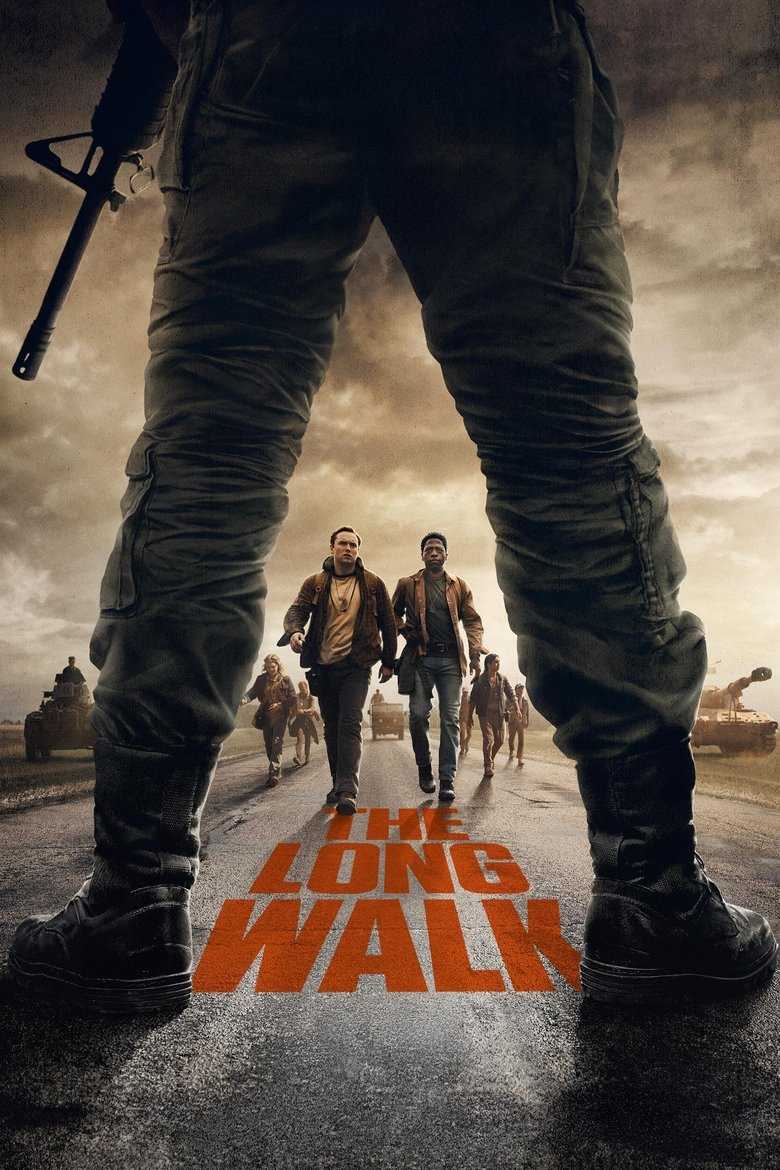
The Long Walk
Release Date
September 12, 2025
Runtime
108 Minutes
Director
Francis Lawrence
Producers
Roy Lee, Steven Schneider

Cooper Hoffman
Raymond Garraty / #47


Garrett Wareing
Stebbins / #38

Tut Nyuot
Arthur Baker / #6

